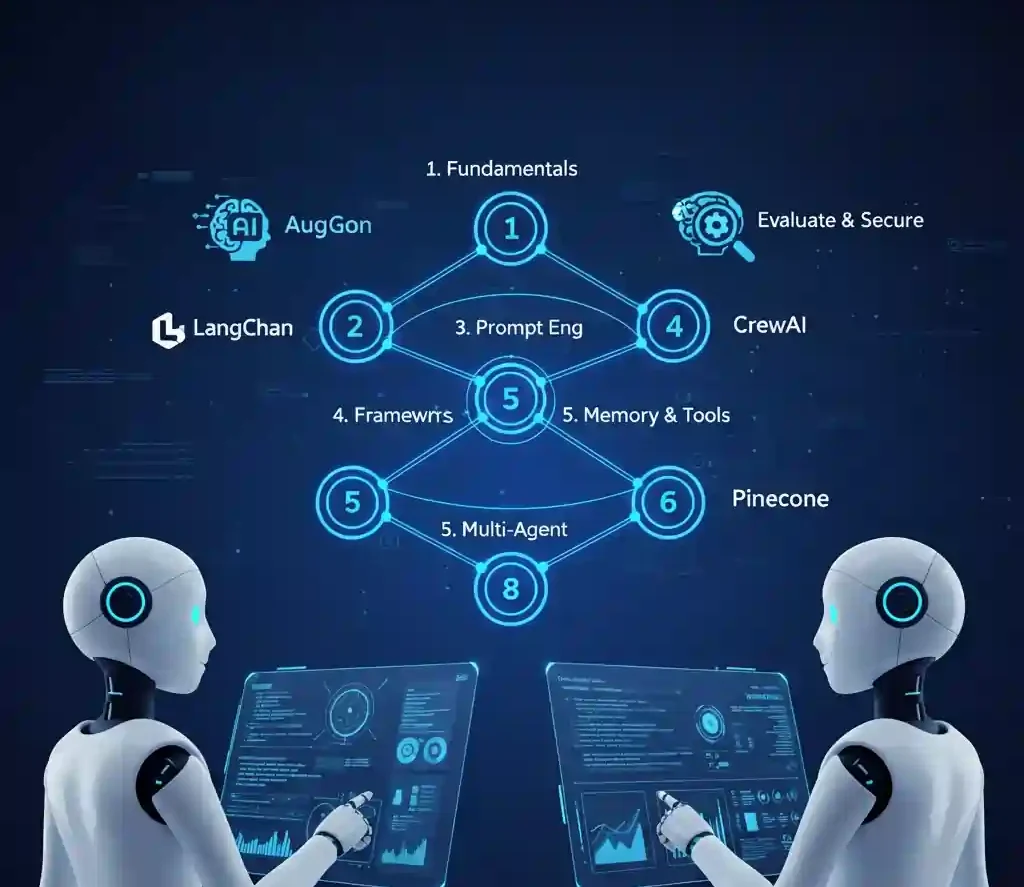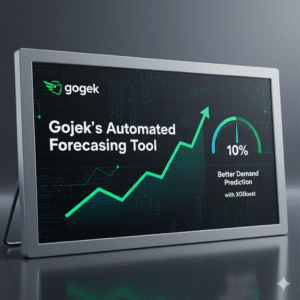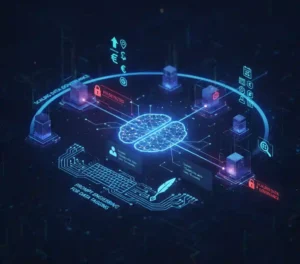Hey there, if you’re a developer dipping your toes into the wild world of AI or a seasoned coder eyeing the next big leap, you’ve landed in the right spot. Imagine handing off repetitive tasks to smart software that thinks, acts, and learns on its own, like a digital sidekick that never sleeps. That’s the magic of AI agents. But where do you even start? That’s what this AI agents development roadmap is all about: a no-fluff guide to building autonomous AI agents that actually deliver results.
In 2025, the AI agents market is exploding, valued at $7.92 billion and projected to skyrocket to $236.03 billion by 2034. Businesses aren’t just experimenting anymore; they’re deploying these bad boys to slash costs by up to 80% and speed up operations dramatically. Whether you’re automating customer support or optimizing supply chains, mastering this AI agent development roadmap will put you ahead of the curve. Let’s dive in and map out your path, step by step.
Table of Contents
What Are AI Agents and Why Bother Building Them?
Picture this: Traditional AI models spit out answers based on what you feed them. AI agents? They’re the evolved version, autonomous entities that perceive their environment, make decisions, and take actions to hit goals. Think of them as mini-robots in code form, powered by large language models (LLMs) but with brains for planning and tools for execution.
Why build them now? Simple: efficiency. A single AI agent can handle complex workflows that would take humans hours, reducing errors and freeing you up for creative work. In e-commerce, for instance, agents personalize recommendations on the fly, boosting sales by 30% in some cases. And with tools making it easier than ever, even solo devs can prototype in days, not months.
But here’s the kicker, without a solid AI agents development roadmap, you’ll waste time chasing shiny frameworks that don’t fit your needs. That’s why we’re breaking it down into eight actionable steps. Ready to roll up your sleeves?
The AI Agents Development Roadmap: Your 8-Step Blueprint
This isn’t some vague outline; it’s a battle-tested AI agents development roadmap drawn from real projects and industry trends. We’ll cover everything from basics to deployment, weaving in AI agent frameworks, building autonomous AI agents, and leveraging top AI agent tools. Each step includes practical tips, so you can implement as you read.
Step 1: Nail the Fundamentals of AI and Machine Learning
You can’t build a house without a foundation, right? Same goes here. Start with the basics: grasp what AI really means, from supervised learning to neural networks. If you’re new, spend a week on Python essentials, it’s the lingua franca of AI.
- Key Concepts to Master: Supervised vs. unsupervised learning, data preprocessing, and basic algorithms like regression and clustering.
- Actionable Tip: Use free resources like Jupyter notebooks to experiment. Load a dataset from Kaggle and build a simple predictor. This hands-on vibe will make later steps click.
- Time Estimate: 2-4 weeks, depending on your background.
Fact: 70% of AI projects fail due to weak foundational knowledge. Don’t skip this, it’s your insurance against debugging nightmares down the line.
Step 2: Get Comfortable with Large Language Models (LLMs)
LLMs are the heart of modern AI agents, turning raw text into intelligent responses. Dive into models like GPT-4 or open-source gems like Llama 3. Understand tokenization, fine-tuning, and how these beasts handle context.
Here’s where building autonomous AI agents starts feeling real. Agents use LLMs as their “brain” to reason and respond dynamically.
- Pro Tip: Play with APIs from Hugging Face. Fine-tune a model on a small dataset (say, customer queries) to see how it adapts.
- Common Pitfall: Overlooking context windows, pick models with at least 8K tokens for agentic tasks.
- Milestone Project: Create a basic chatbot that summarizes articles. Boom, your first taste of autonomy.
By week’s end, you’ll see why LLMs power 90% of production AI agents today.
Step 3: Master Prompt Engineering for Agents
Prompts aren’t just words; they’re the secret sauce for directing agent behavior. This step in our AI agents development roadmap focuses on crafting precise instructions that make agents reliable, not random.
Learn techniques like chain-of-thought prompting, where you guide the model step-by-step: “First, analyze the data. Then, propose solutions.”
- Essential Techniques:
- Zero-shot vs. few-shot prompting.
- Role-playing: “Act as a seasoned data analyst.”
- Error-handling prompts to catch hallucinations.
- Hands-On Exercise: Build a prompt that turns a messy email into a structured task list. Test iterations until accuracy hits 95%.
- Why It Matters: Good prompts cut development time by 40%, per developer surveys.
This skill alone will supercharge your ability to build autonomous AI agents without endless retraining.
Step 4: Explore AI Agent Architectures and Frameworks
Now we’re cooking. Shift to AI agent frameworks that glue everything together. LangChain and LlamaIndex top the list for building autonomous AI agents—they handle chaining LLMs with tools seamlessly.
- Top AI Agent Tools:
- LangChain: For modular agent design; great for beginners.
- AutoGen: Microsoft’s framework for multi-agent systems, where agents collaborate like a team.
- CrewAI: Simplifies role-based agents for workflows.
- Quick Start: Install LangChain via pip and build a simple ReAct agent (Reason + Act) that queries weather APIs.
- Stat Spotlight: Frameworks like these have accelerated agent deployment by 3x in enterprises.
Spend 3-5 weeks here, prototyping one agent per framework to find your fit.
Step 5: Integrate Memory and Tools for Smarter Agents
Agents flop without memory, they need to remember past actions to avoid repeating mistakes. Add short-term (conversation history) and long-term (vector databases like Pinecone) memory layers.
Tools are next: Equip agents with APIs for email, calendars, or databases. This is core to building autonomous AI agents that interact with the real world.
- Implementation Steps:
- Use Redis for quick memory storage.
- Integrate tools via function calling in OpenAI’s API.
- Test with a travel planner agent that books flights based on user prefs.
- Real-World Example: A sales team used a memory-enabled agent to recall client histories, closing deals 25% faster.
Pro tip: Always log interactions for debugging, it’s a lifesaver.
Step 6: Design Multi-Agent Systems for Complex Tasks
Solo agents are cool, but multi-agent systems? Game-changers. Here, agents specialize, one researches, another analyzes, a third executes. This step elevates your AI agents development roadmap to enterprise level.
- Key Architectures:
- Hierarchical: A boss agent delegates to workers.
- Peer-to-peer: Agents debate and vote on decisions.
- Tool Reco: Haystack for collaborative setups.
- Project Idea: Build a content creation system, one agent brainstorms topics, another writes drafts, the last edits.
- Impact Stat: Multi-agent setups handle 50% more complex queries than single agents.
Allocate 4 weeks; complexity ramps up, but so does the fun.
Step 7: Evaluate, Secure, and Optimize Your Agents
Don’t deploy blind. Test for accuracy, bias, and security. Use metrics like task completion rate and hallucination score.
- Optimization Hacks:
- A/B test prompts.
- Monitor with LangSmith for real-time insights.
- Secure APIs with OAuth to prevent leaks.
- Tip from the Trenches: Start small—pilot in a sandbox before going live. One overlooked vuln can cost thousands.
This phase ensures your agents aren’t just smart, but trustworthy.
Step 8: Deploy, Scale, and Iterate
Final stretch: Package with Docker, deploy on Vercel or AWS, and scale with Kubernetes if needed. Set up monitoring for drift.
- Deployment Checklist:
- CI/CD pipelines.
- Cost controls (LLM calls add up!).
- User feedback loops for iteration.
- Success Metric: Aim for 99% uptime in week one.
Congrats, you’ve crushed the AI agents development roadmap! Now, maintain it like a garden: regular updates keep it thriving.
Essential AI Agent Tools and Frameworks to Accelerate Your Build
Beyond the steps, stock your toolkit wisely. For AI agent frameworks, LangChain reigns for its ecosystem, while Semantic Kernel shines in .NET worlds. Building autonomous AI agents? Grab Streamlit for quick UIs or FastAPI for robust backends.
Don’t sleep on vector stores like FAISS, they’re MVPs for memory in multi-agent systems. And for debugging, Phoenix from Arize.ai visualizes agent traces like a pro.
Pick three to start; overwhelm kills momentum.
Actionable Tips for Building Autonomous AI Agents
From my chats with devs in the trenches, here are gems to dodge pitfalls:
- Keep It Simple: Start with one tool integration; complexity creeps in fast.
- Hybridize Approaches: Blend LLMs with rule-based logic for reliability, pure AI can hallucinate under stress.
- Prioritize Transparency: Log every decision; it builds trust and eases audits.
- Test Ruthlessly: Simulate edge cases, like network failures or vague inputs.
- Scale Smart: Use serverless for bursts, costs plummet 60% vs. always-on servers.
Implement one tip per project, and watch your agents evolve.
Common Challenges in AI Agents Development and How to Crush Them
Hitting walls? You’re not alone. Hallucinations plague 20% of early builds, countered with grounded prompts tied to verified data. Scalability woes? Offload to cloud queues.
For multi-agent systems, coordination fails often, use shared memory hubs to sync. And ethics? Always bake in bias checks; it’s non-negotiable in 2025.
Remember, iteration is key. Treat failures as data points.
FAQs
What is the best AI agent framework for beginners?
LangChain is a crowd favorite, its modular design lets you build without boilerplate. Pair it with Python for quick wins in building autonomous AI agents.
How long does it take to complete an AI agents development roadmap?
For most devs, 3-6 months part-time. Focus on projects over theory to speed it up.
Can I build multi-agent systems without advanced coding skills?
Absolutely! Tools like CrewAI abstract the complexity. Start with templates and tweak as you learn.
What are the top AI agent tools for deployment?
Docker for containerization, Vercel for hosting, and LangSmith for monitoring, they make scaling multi-agent systems a breeze.
How do I measure success in building autonomous AI agents?
Track metrics like completion rate (aim for 85%+) and user satisfaction via NPS. Iterate based on logs.
Wrapping It Up: Your Next Move on the AI Agents Development Roadmap
There you have it, the full AI agents development roadmap to launch you into autonomous AI mastery. From fundamentals to full deployment, you’ve got the steps, tools, and inspo to build agents that don’t just work, but wow.
What’s stopping you? Pick Step 1 today, code something small, and share your wins in the comments. The future of dev is agentic, get building, and let’s revolutionize workflows together. What’s your first project idea?


















